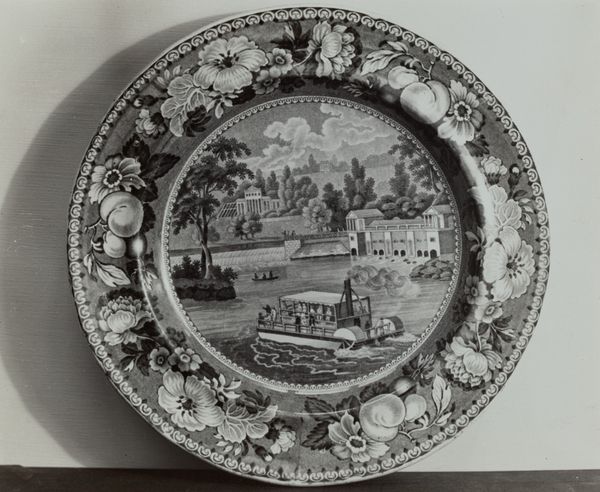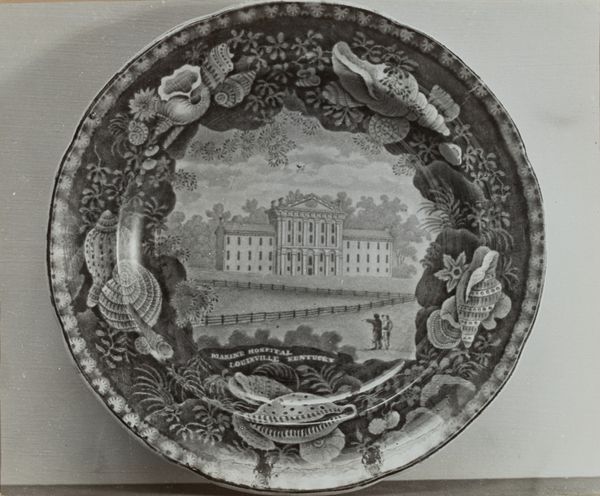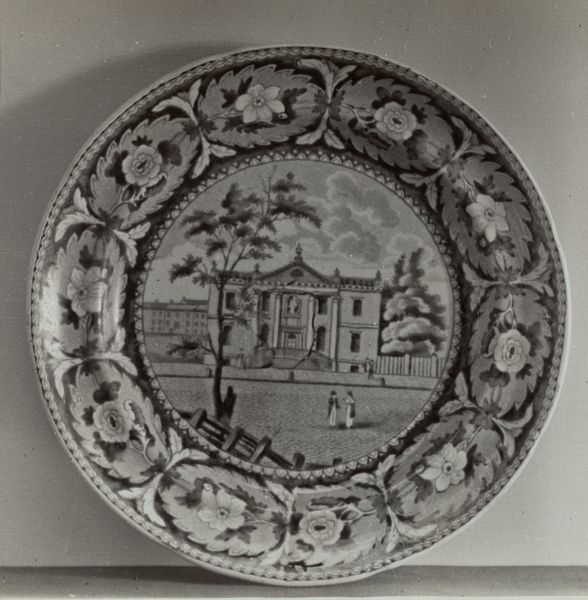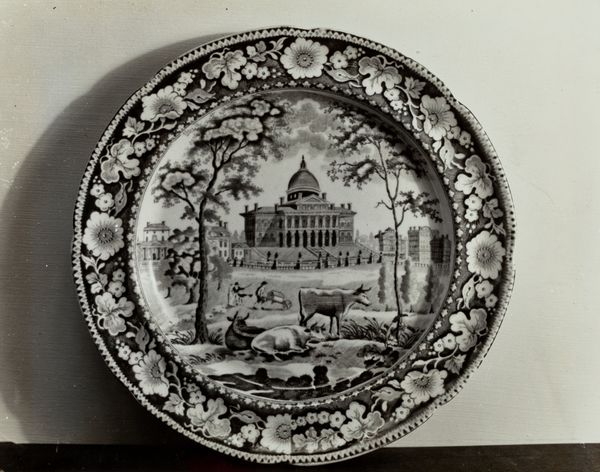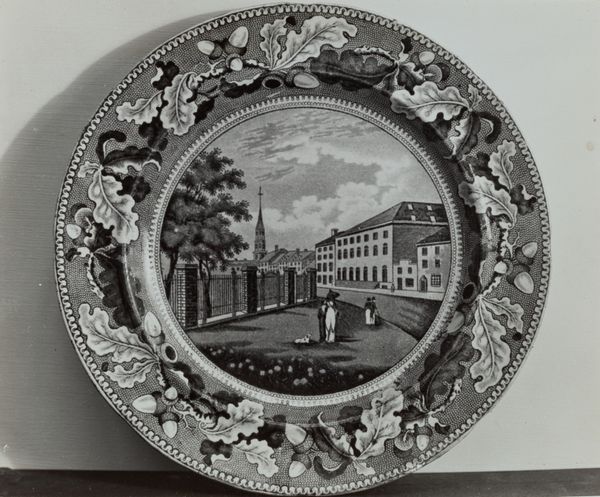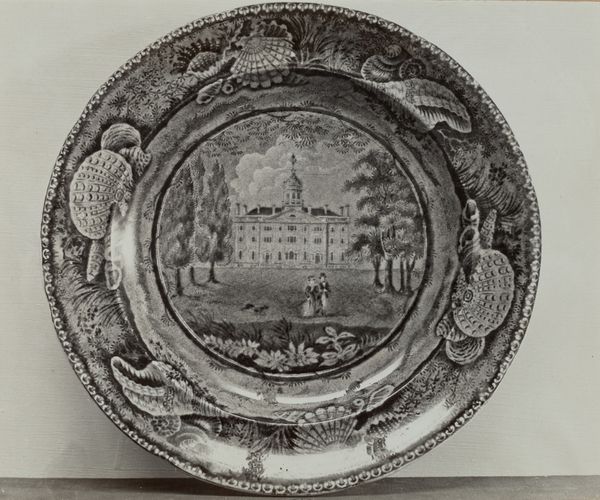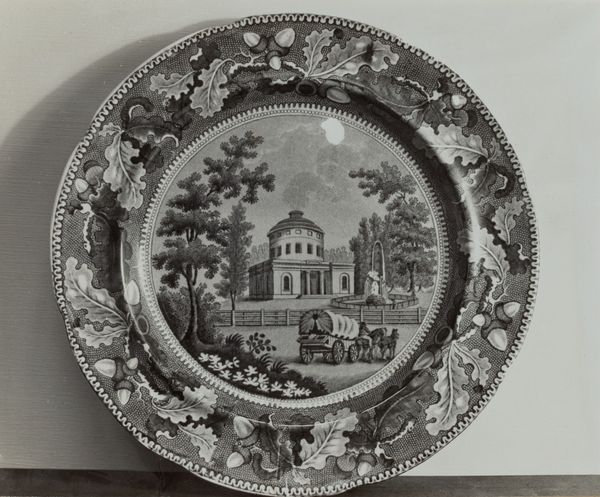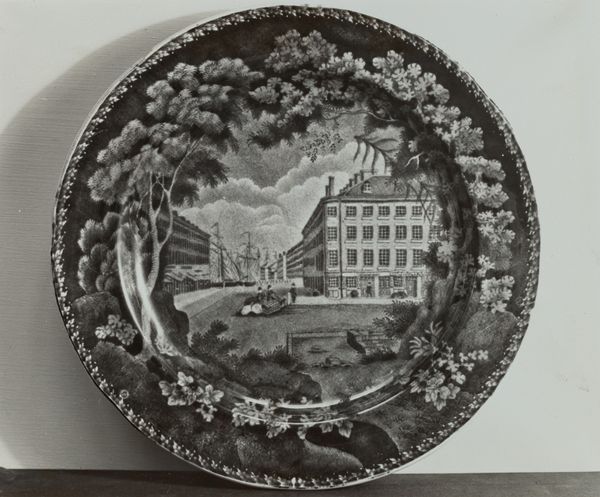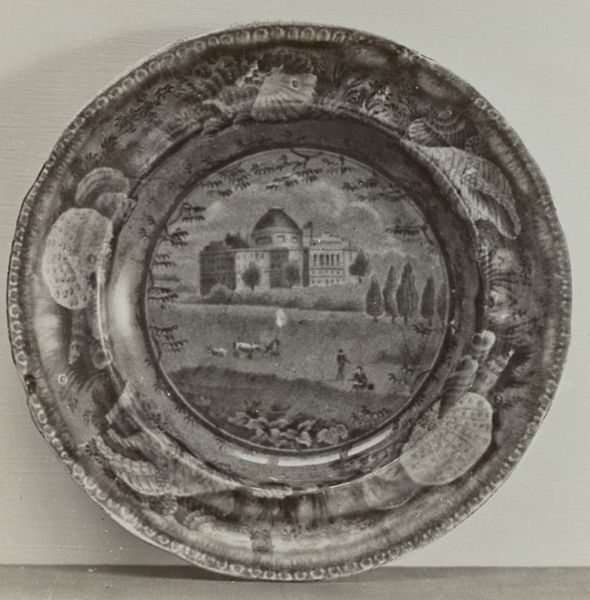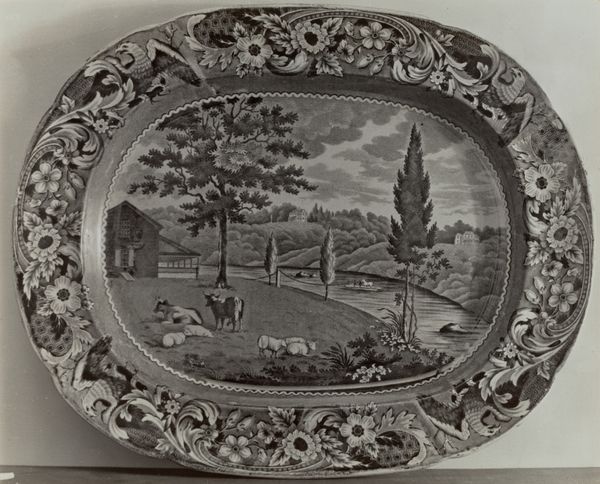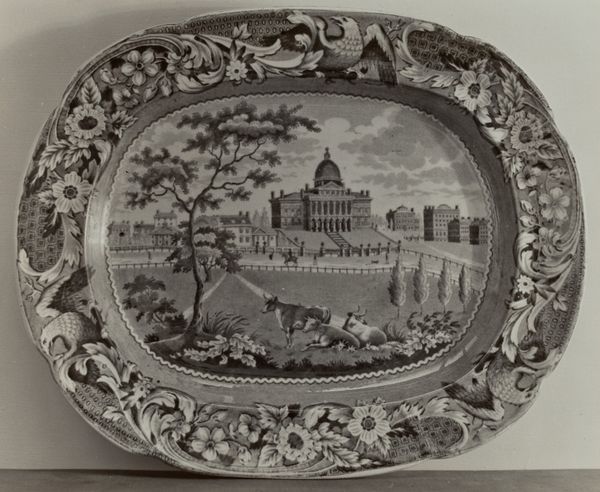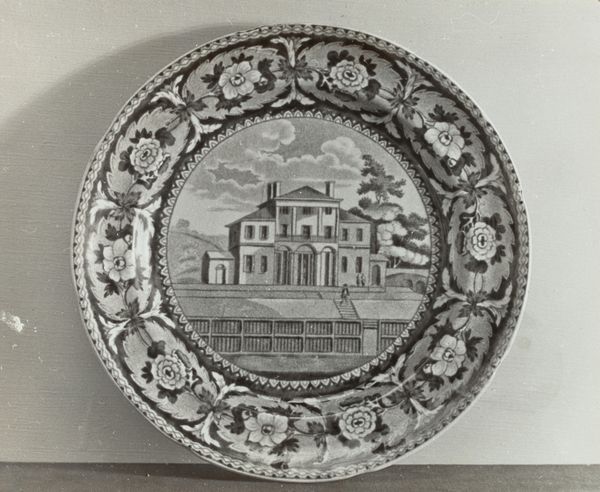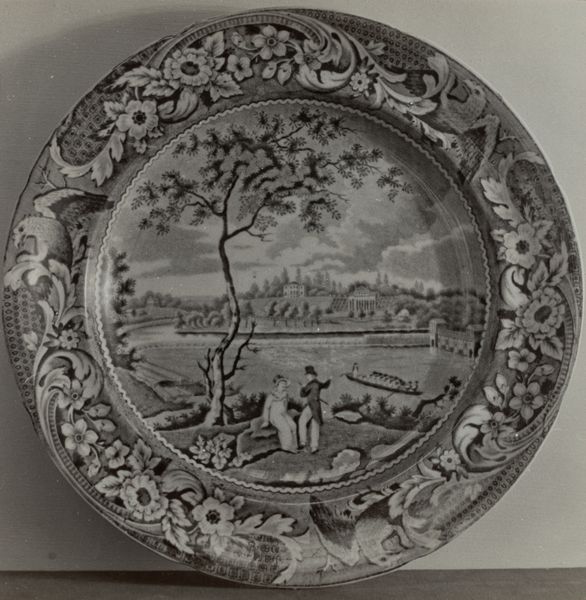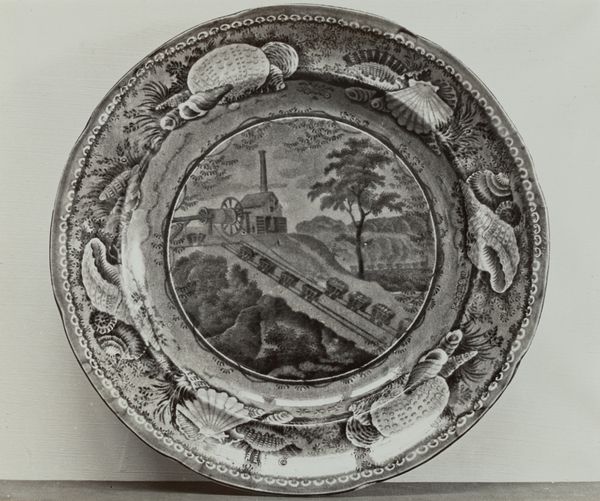
print, ceramic
# print
#
landscape
#
ceramic
#
academic-art
Dimensions: overall: 20.3 x 25.4 cm (8 x 10 in.) Original IAD Object: 10 1/8" in diameter
Copyright: National Gallery of Art: CC0 1.0
Editor: This is a ceramic plate from around 1936, titled "Harvard College." It looks like a print has been applied to it. I’m struck by its rather idyllic depiction of the campus; almost a romanticised view. How do you interpret this work, especially considering its historical context? Curator: Well, the seemingly innocent depiction of Harvard belies a complex narrative when viewed through an intersectional lens. We see a landscape, seemingly open and accessible. But who truly had access to such institutions in the 1930s? This imagery served to reinforce notions of exclusivity and privilege, particularly along lines of race and class. Editor: That's interesting. I hadn't considered it that way. So the plate, in a way, normalizes and perpetuates a system of inequality? Curator: Exactly. The visual language—the manicured lawns, the grand architecture— speaks to a specific type of power and legacy. This was during the Depression Era, with widespread social unrest. Consider the contrasting realities for most Americans, versus the privileged few depicted here. Even the oak leaf border; think about what the oak symbolizes: strength, endurance, but also a deeply rooted, traditional form of power. Who was able to "endure" and reap the "strength" afforded by Harvard’s legacy? Editor: It's making me rethink what I initially perceived as simply a pleasant scene. Are you saying that seemingly innocuous images can still contribute to larger systemic issues? Curator: Absolutely. Art, even in the form of a decorative plate, doesn't exist in a vacuum. It's always in dialogue with the social and political landscape, either challenging it or, as in this case, subtly reinforcing its existing power structures. We must also think about the domestic space it likely occupied: the hands that washed it, the conversations it adorned tables during, and whose narratives it reinforced within those settings. Editor: I see. It's far more complex than I initially thought. Thanks, it’s given me a new perspective. Curator: Indeed. By examining the visual and material culture of the past, we can better understand how power operates in the present.
Comments
No comments
Be the first to comment and join the conversation on the ultimate creative platform.
